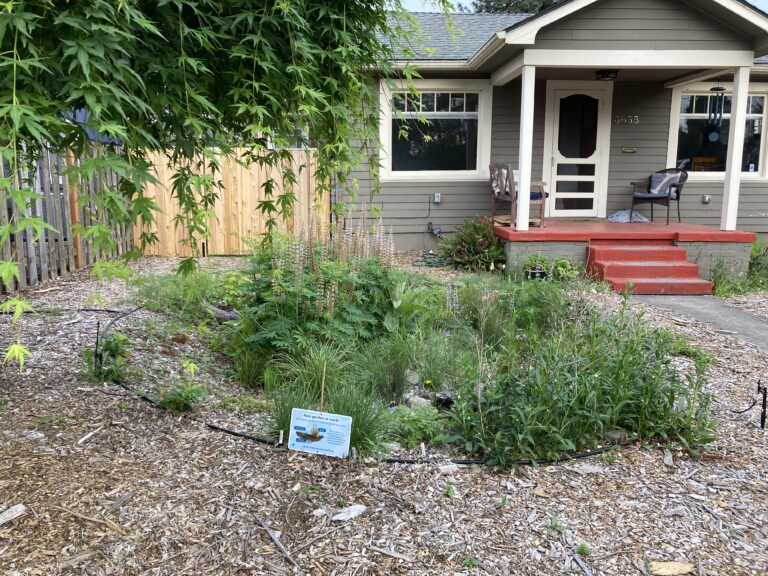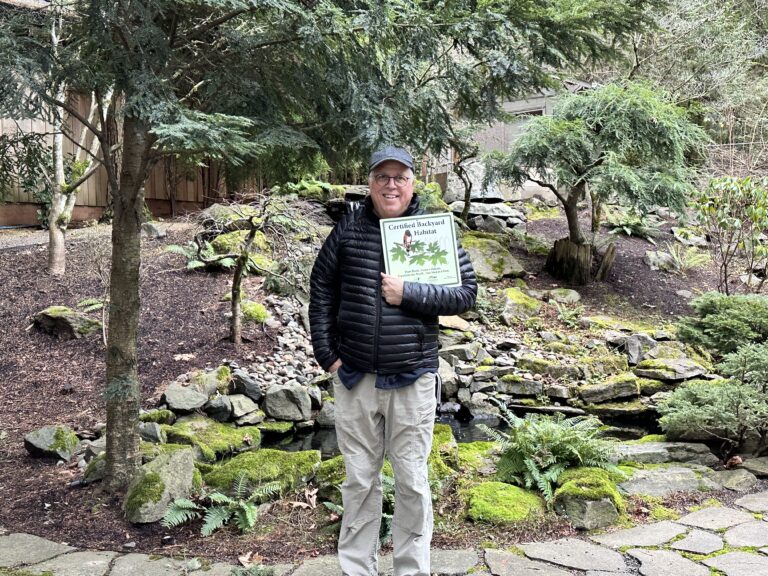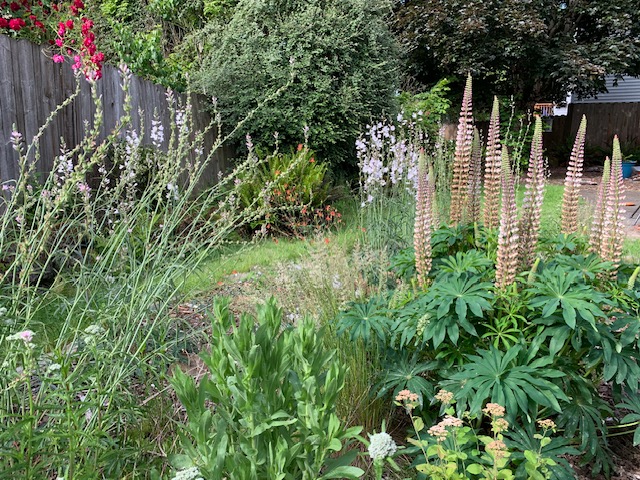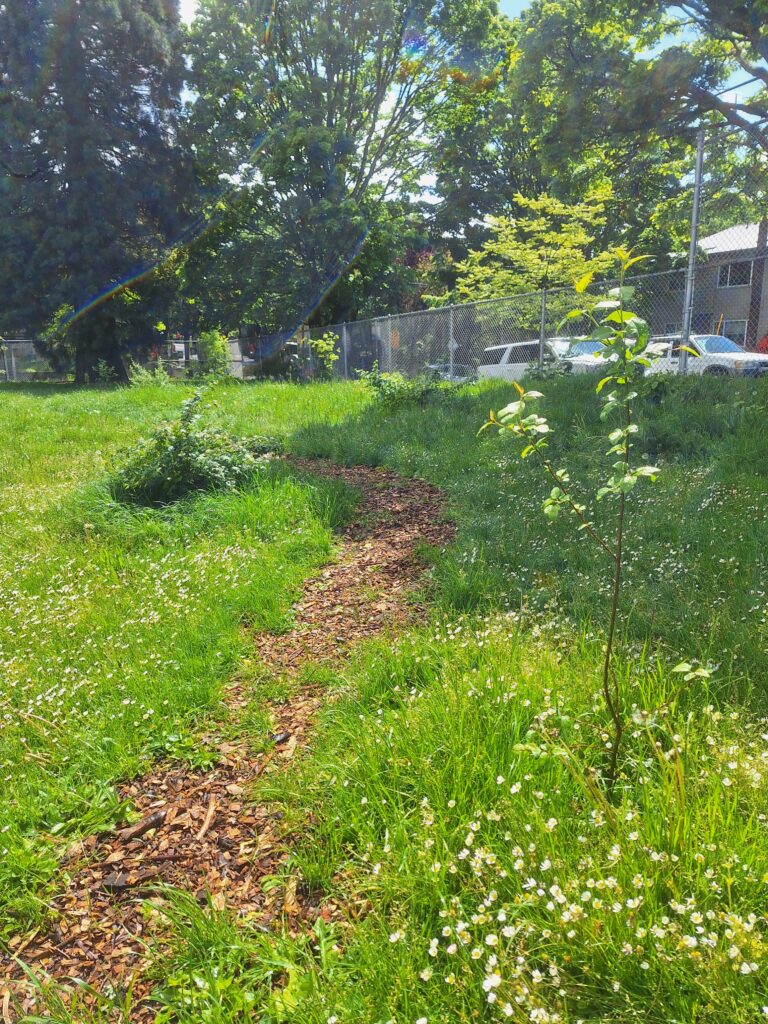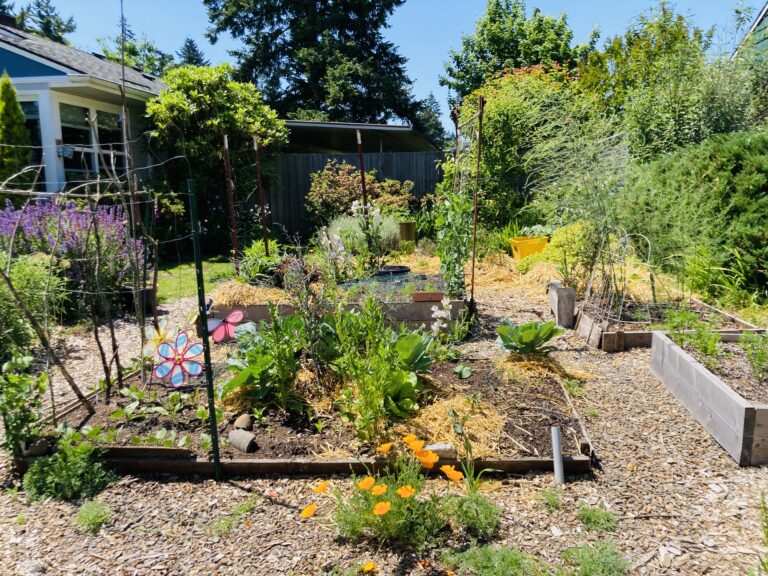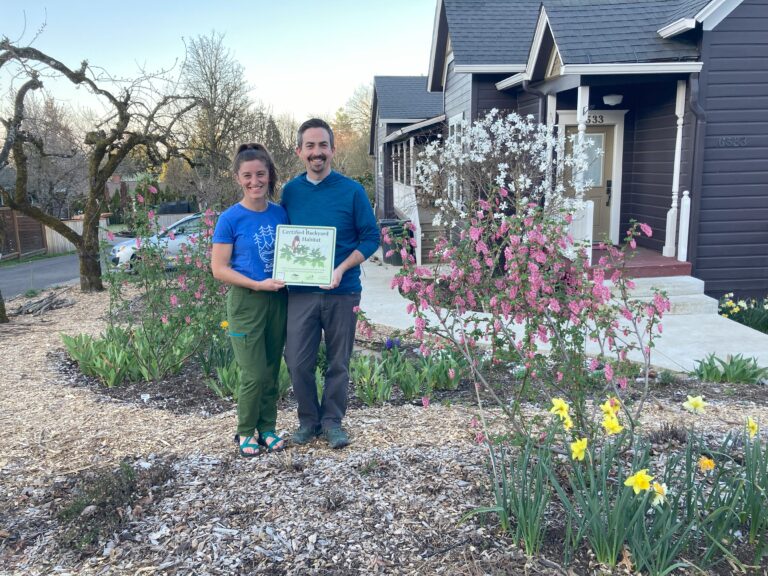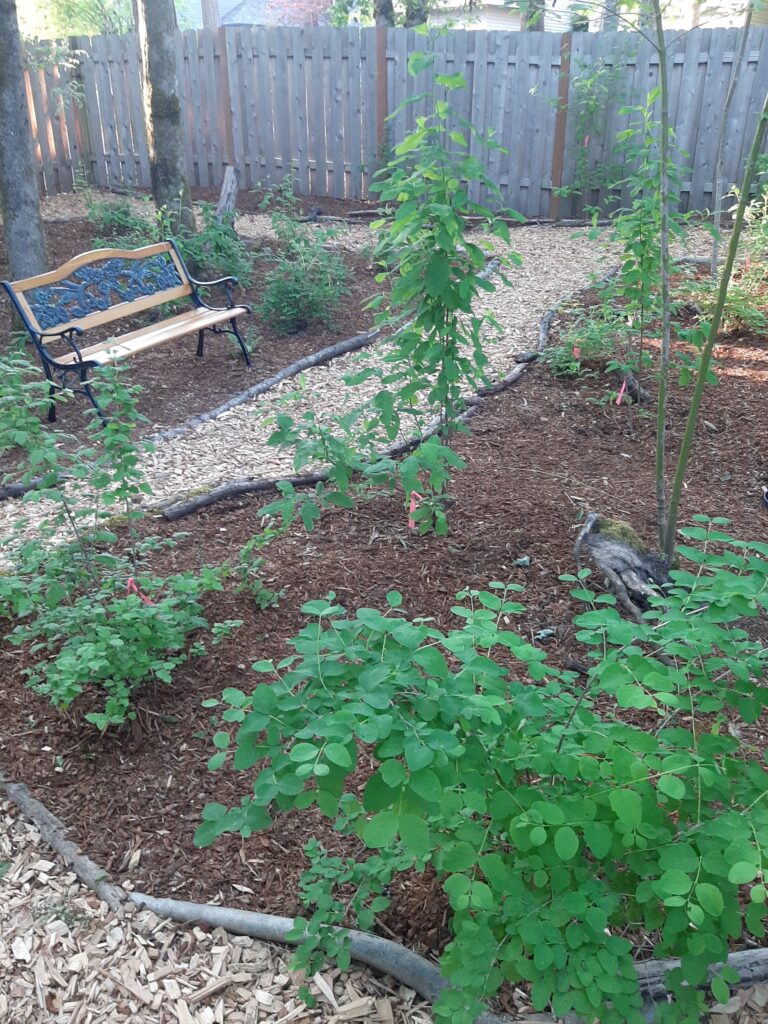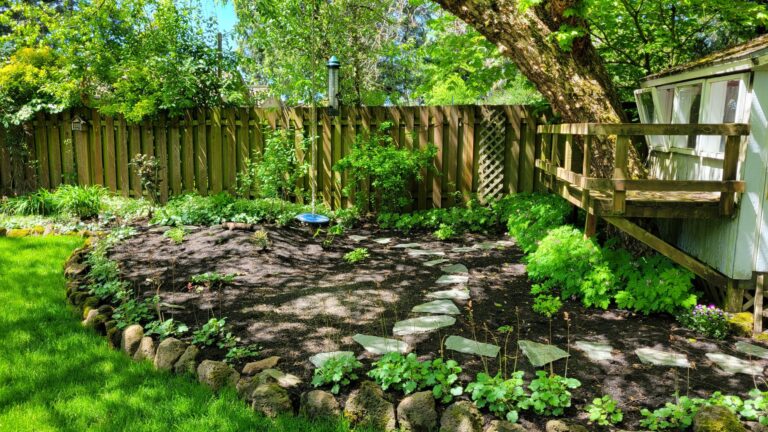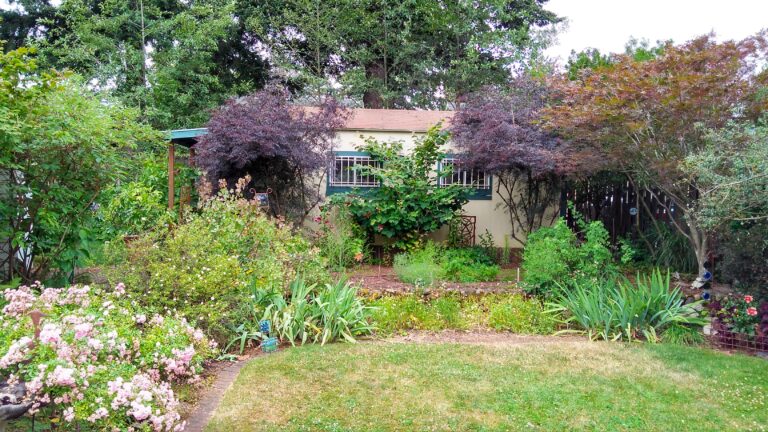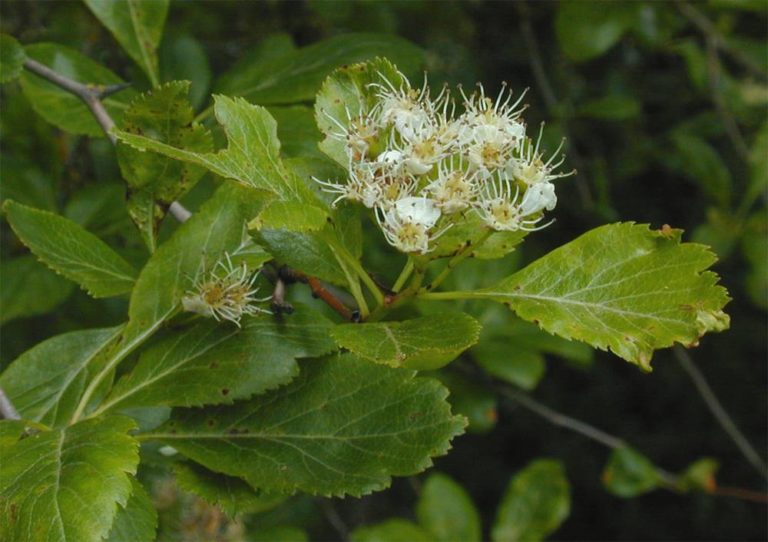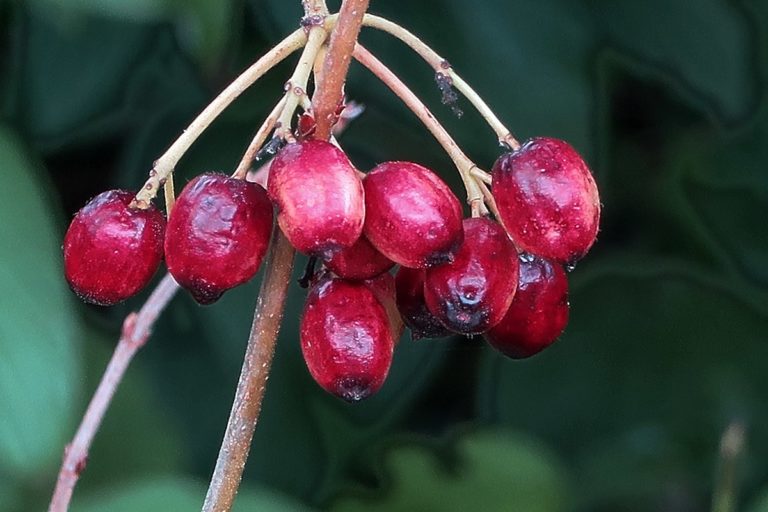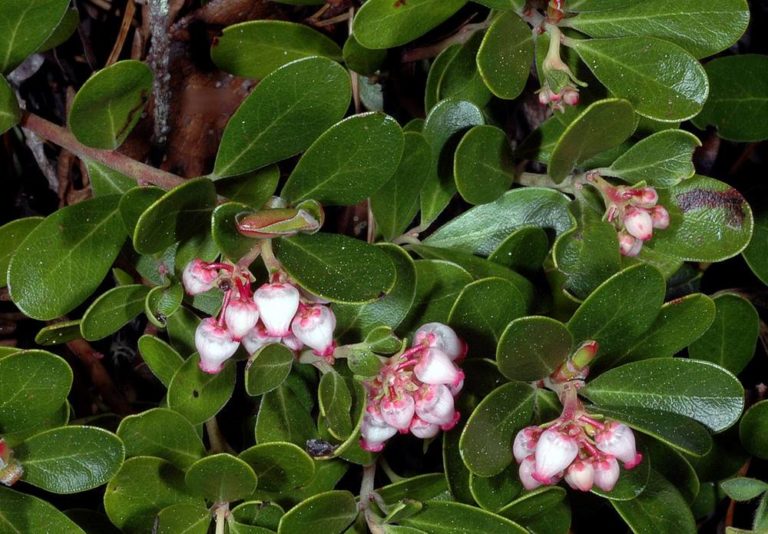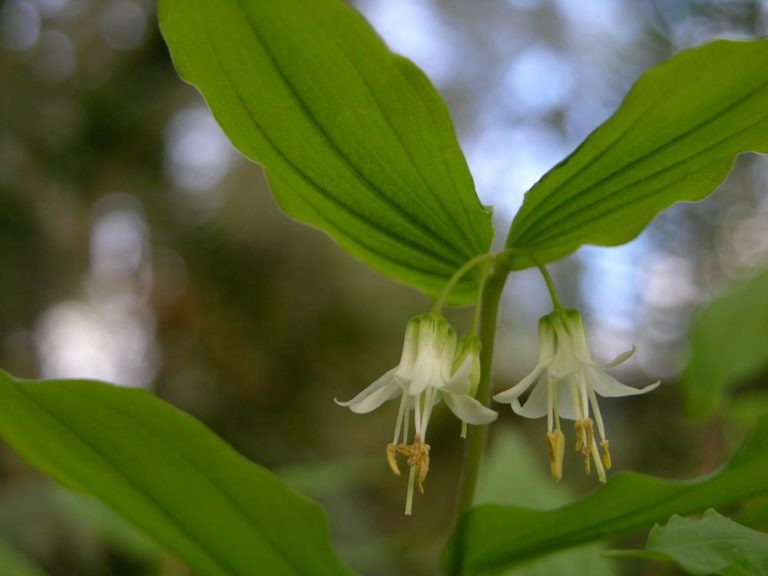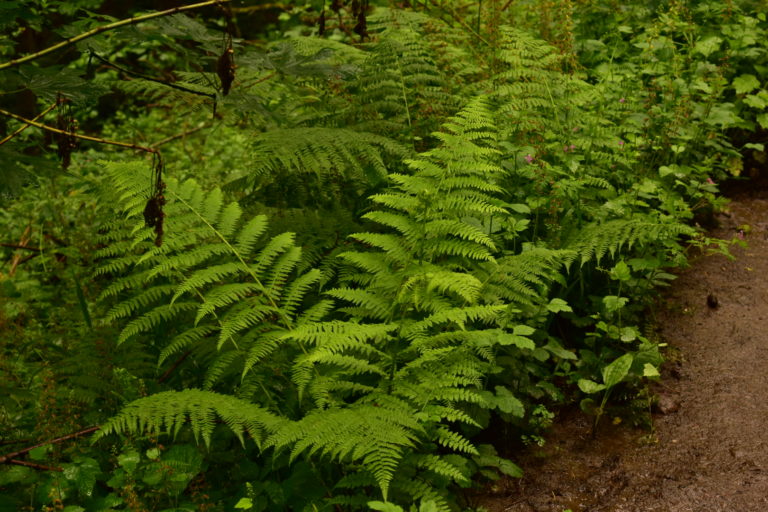Blog
Backyard Habitat is committed to fostering a more inclusive and respectful approach to environmental stewardship, including the language we use to talk about plants. For many years, the term “invasive”…
Site Information: Located in the Roseway (NE Portland) neighborhood, with full sun, part sun, shade, and dry areas.
At Backyard Habitats, we provide incentives and knowledge to program participants working toward creating wildlife habitats. We enjoy recognizing and celebrating all those who met the Silver, Gold, and Platinum…
This is an update to a site located in the St. John’s neighborhood of North Portland, Caroline’s site conditions are part sun and shade.
Nature is something that all humans need connection to. As an Indigenous staff member of the program, I have experienced those ties to my natural relatives (plants and animals) being…
This habitat in the Garden Home neighborhood in SW Portland, has full sun, part sun, shade, dry, moist, and slope soil.
This habitat in the Mill Park neighborhood has full sun, part sun, shade, dry, and moist soil.
At Backyard Habitats, we not only provide incentives and knowledge to program participants working toward creating wildlife habitats, but we also enjoy recognizing and celebrating all those who met the…
Written By: Daniel Krumm While upon first glance it may be a relatively non-descript small gray mammal, the Pacific water shrew is a rare gem in Northwestern ecosystems, and possesses…
This habitat in Lake Oswego has part sun, shade, and moist soil.
This habitat in the city of Gresham has full sun, part sun, shade, dry, and moist soil.
This habitat in the Rose City Park neighborhood has full sun, part sun, shade, and dry soil.
Suksdorf’s hawthorn is an overstory tree that supports hundreds of species, looks good while doing it, and has a great name.
Attracting pollinators and pest-eating insects, supporting over thirty species of butterflies, providing food and shelter for birds and mammals, our native viburnum does it all.
Oregon ash is a wetland wonder, stabilizing soils, protecting water, housing caterpillars, butterflies, and birds, and providing debris for aquatic habitat.
Oregon ash is a wetland wonder, stabilizing soils, protecting water, housing caterpillars, butterflies, and birds, and providing debris for aquatic habitat.
Drops of gold and Hooker’s fairy bells are apt names for this lily that grows in the shade of trees, often surrounded by water.
Lady fern is a tall, broad-leaved fern that grows in the forests and riparian areas of the Pacific Northwest. Lady fern’s spring growth provides food for many insects and snails, while the leaves provide shelter for birds and mammals in the summer and fall.
Want ornamental grass in your landscape? Wish you could encourage more ground-nesting birds? Just want to know more about native grasses? Come check out our new post, all about blue wildrye.
As we continue to experience the devastating effects of climate change and habitat loss, it’s become increasingly important to consider how our actions can impact the environment. We can make…
